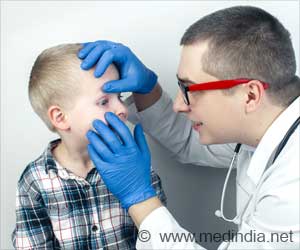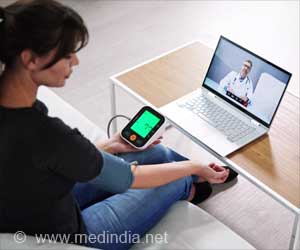- AI model accurately identifies myopia, strabismus, and ptosis in children
- The study utilized 1,419 facial images from 476 participants for the AI model
- This technology offers a quick, accessible tool for early diagnosis at home
A groundbreaking study led by researchers at Shanghai Jiao Tong University School of Medicine has demonstrated the potential of combining artificial intelligence (AI) with smartphone photography to diagnose common childhood eye conditions. The research, spearheaded by Dr. Qin Shu, MS Jiali Pang, and Dr. Zijia Liu, explores how this innovative approach could revolutionize early detection of eye diseases in children (1✔ ✔Trusted Source
Artificial Intelligence for Early Detection of Pediatric Eye Diseases Using Mobile Photos
).
Advertisement
Developing the AI Diagnostic Model
In this cross-sectional study, the research team developed a deep learning-based model designed to identify myopia, strabismus, and ptosis using facial photographs. The study involved 1,419 images from 476 participants, all under 18 years of age, who had been diagnosed with one of these eye conditions following an ophthalmologic examination at Shanghai Ninth People’s Hospital. The participants provided clear facial images under specific conditions, with informed consent obtained from both the children and their guardians.
Exclusions from the study included individuals with severe facial abnormalities, prior reconstructive surgeries, or psychological conditions that could affect image capture. The images were taken in a well-lit clinic setting using a smartphone, with the participants required to remove their glasses and look straight ahead.
Advertisement
High Accuracy in Detecting Eye Conditions
The AI model showed promising results, with high sensitivity in detecting myopia (0.84), strabismus (0.73), and ptosis (0.85). The performance was consistent across both male and female participants, though the accuracy varied among different age groups, with increasing sensitivity for myopia and strabismus as children aged.
The study suggests that this AI-based approach, utilizing simple smartphone images, could serve as a valuable early diagnostic tool for families, enabling early detection and reducing the risk of more severe vision problems due to delayed screening.
Advertisement
Limitations and Future Directions
While the study’s findings are promising, the researchers acknowledged certain limitations. The single-centre study with a relatively small sample size underscores the need for multicentre investigations to validate and generalize the algorithm’s effectiveness.
Additionally, the study used only one image per participant, limiting the algorithm’s performance due to insufficient data. The researchers also noted that the model’s accuracy in detecting strabismus was lower, likely due to the smaller sample size for this condition. They propose increasing the number of images and developing a model capable of assessing the severity of the conditions to improve diagnostic accuracy.
Broader Implications for AI in Healthcare
The study’s findings underscore the potential for AI in transforming early diagnosis and treatment of childhood eye conditions. By enabling families to conduct preliminary screenings at home, this technology could lead to more equitable healthcare access and prevent the progression of eye diseases in children.
The integration of AI with simple tools like smartphone cameras holds immense potential for advancing pediatric healthcare. By enabling early diagnosis of eye conditions at home, this technology could prevent serious vision problems and ensure timely medical intervention, ultimately contributing to improved global health standards.
Reference:
- Artificial Intelligence for Early Detection of Pediatric Eye Diseases Using Mobile Photos – (https://www.ncbi.nlm.nih.gov/pmc/articles/PMC11304122/)
Source-Medindia



